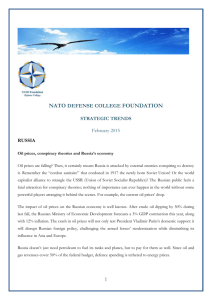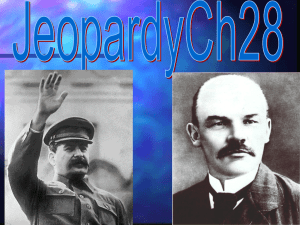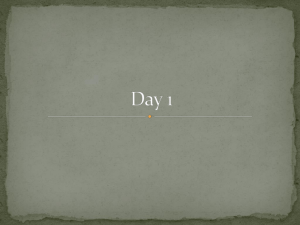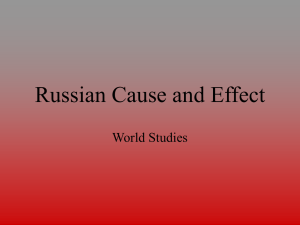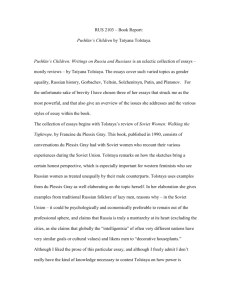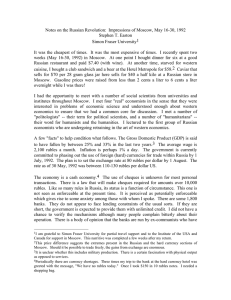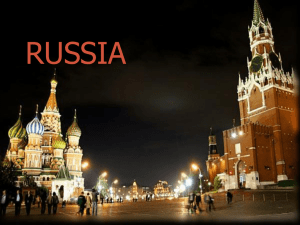Prof - York University
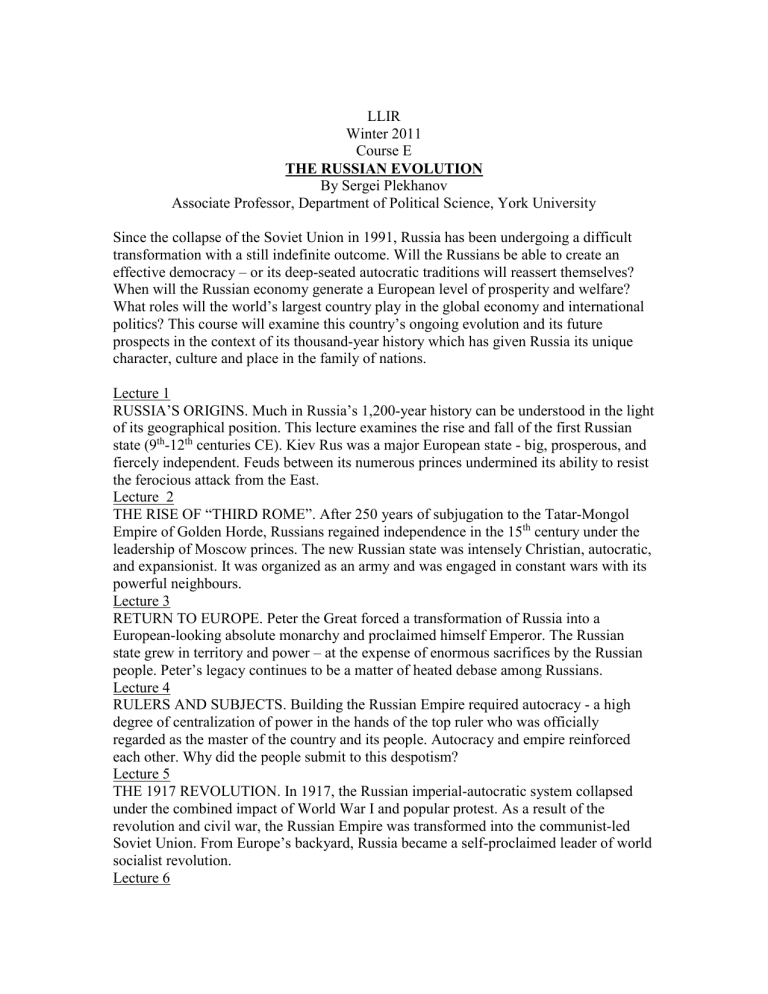
LLIR
Winter 2011
Course E
THE RUSSIAN EVOLUTION
By Sergei Plekhanov
Associate Professor, Department of Political Science, York University
Since the collapse of the Soviet Union in 1991, Russia has been undergoing a difficult transformation with a still indefinite outcome. Will the Russians be able to create an effective democracy – or its deep-seated autocratic traditions will reassert themselves?
When will the Russian economy generate a European level of prosperity and welfare?
What roles will the world’s largest country play in the global economy and international politics? This course will examine this country’s ongoing evolution and its future prospects in the context of its thousand-year history which has given Russia its unique character, culture and place in the family of nations.
Lecture 1
RUSSIA’S ORIGINS. Much in Russia’s 1,200-year history can be understood in the light of its geographical position. This lecture examines the rise and fall of the first Russian state (9 th
-12 th
centuries CE). Kiev Rus was a major European state - big, prosperous, and fiercely independent. Feuds between its numerous princes undermined its ability to resist the ferocious attack from the East.
Lecture 2
THE RISE OF “THIRD ROME”. After 250 years of subjugation to the Tatar-Mongol
Empire of Golden Horde, Russians regained independence in the 15 th
century under the leadership of Moscow princes. The new Russian state was intensely Christian, autocratic, and expansionist. It was organized as an army and was engaged in constant wars with its powerful neighbours.
Lecture 3
RETURN TO EUROPE. Peter the Great forced a transformation of Russia into a
European-looking absolute monarchy and proclaimed himself Emperor. The Russian state grew in territory and power – at the expense of enormous sacrifices by the Russian people. Peter’s legacy continues to be a matter of heated debase among Russians.
Lecture 4
RULERS AND SUBJECTS. Building the Russian Empire required autocracy - a high degree of centralization of power in the hands of the top ruler who was officially regarded as the master of the country and its people. Autocracy and empire reinforced each other. Why did the people submit to this despotism?
Lecture 5
THE 1917 REVOLUTION. In 1917, the Russian imperial-autocratic system collapsed under the combined impact of World War I and popular protest. As a result of the revolution and civil war, the Russian Empire was transformed into the communist-led
Soviet Union. From Europe’s backyard, Russia became a self-proclaimed leader of world socialist revolution.
Lecture 6
FROM LENINISM TO STALINISM. After the bloody Civil War, which the Bolsheviks won, the country was exhausted and deeply divided. In order to survive in power and rebuild the country, the Bolshevik had to switch from War Communism to NEP, a mix of market economy, socialist policies and one-part dictatorship. Under Stalin, this policy was abandoned in favour of forced modernization and totalitarian state.
Lecture 7
THE GREAT PATRIOTIC WAR. The rise of Hitler pushed the world toward resumption of global war. Moscow tried to stave it off through collective security arrangements, then signed a pact with Hitler, which Hitler broke in 1941, launching a massive invasion of
Russia. At the cost of over 27 million Soviet lives, the Great Patriotic War resulted in the defeat of fascism.
Lecture 8
MOSCOW IN THE COLD WAR. The Cold War propelled Russia to the level of global power it had never experienced – one of the two superpowers contesting the future of the world. But the Cold War was not a zero-sum game between East and West. Domestically, after Stalin’s death in 1953, Soviet communist rulers tried to reform the Stalinist system.
Lecture 9
GORBACHEV AND THE FALL OF USSR. In 1985-91, the new Soviet leader and his supporters made a historic effort to revive the stagnant Soviet system by means of negotiating an end to the Cold War, market reforms, and democratization. It is too early to tell whether the collapse of the entire system was inevitable.
Lecture 10
CAPITALISM WITH A RUSSIAN FACE. President Yeltsin championed the dissolution of the USSR and as President of the Russian Federation ordered rapid transformation of
Russia’s economy along Western capitalist lines. Hailed by the West as “democratic”, the transformation was accompanied by an economic depression, drastic decline in the quality of life for most Russians, and takeover of the nation’s wealth by a small elite.
Lecture 11
PROSPECTS FOR RUSSIAN DEMOCRACY. In a bitter historical irony, President
Yeltsin who became Russia’s first democratically elected head of state in a 1000 years, presided over the rise of an oligarchic, increasingly authoritarian regime, with Yeltsin’s handpicked successor Vladimir Putin bringing this trend to a high point by the end of his presidency. What are the prospects for new democratization?
Lecture 12
RUSSIA AND THE GLOBAL DISORDER. After eight years of Putin’s rule, Russia is much stronger economically, more stable politically, and pursuing an assertive foreign policy in all directions in line with its perceived national interests. Is Russia’s resurgence a cause for alarm, as some are saying – or is a resurgent Russia a factor for peace and security in the increasingly unstable world?

